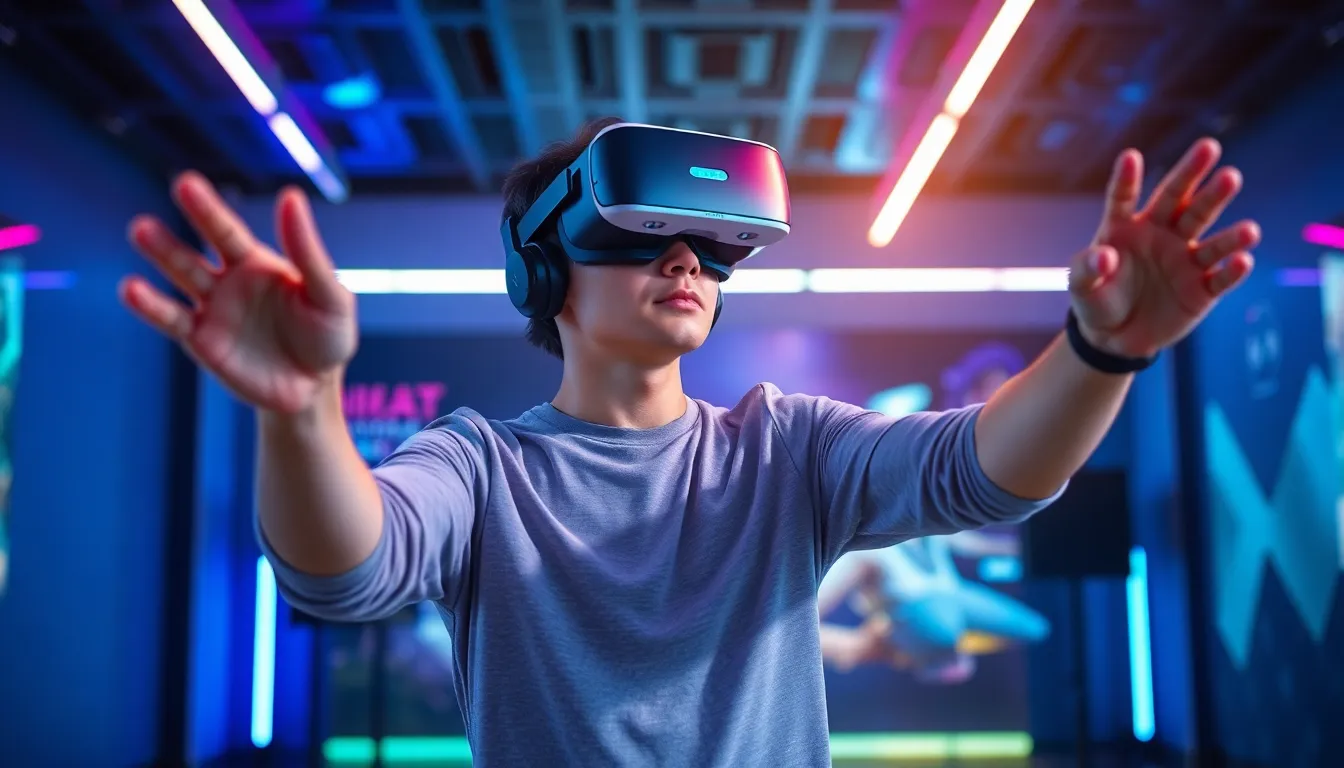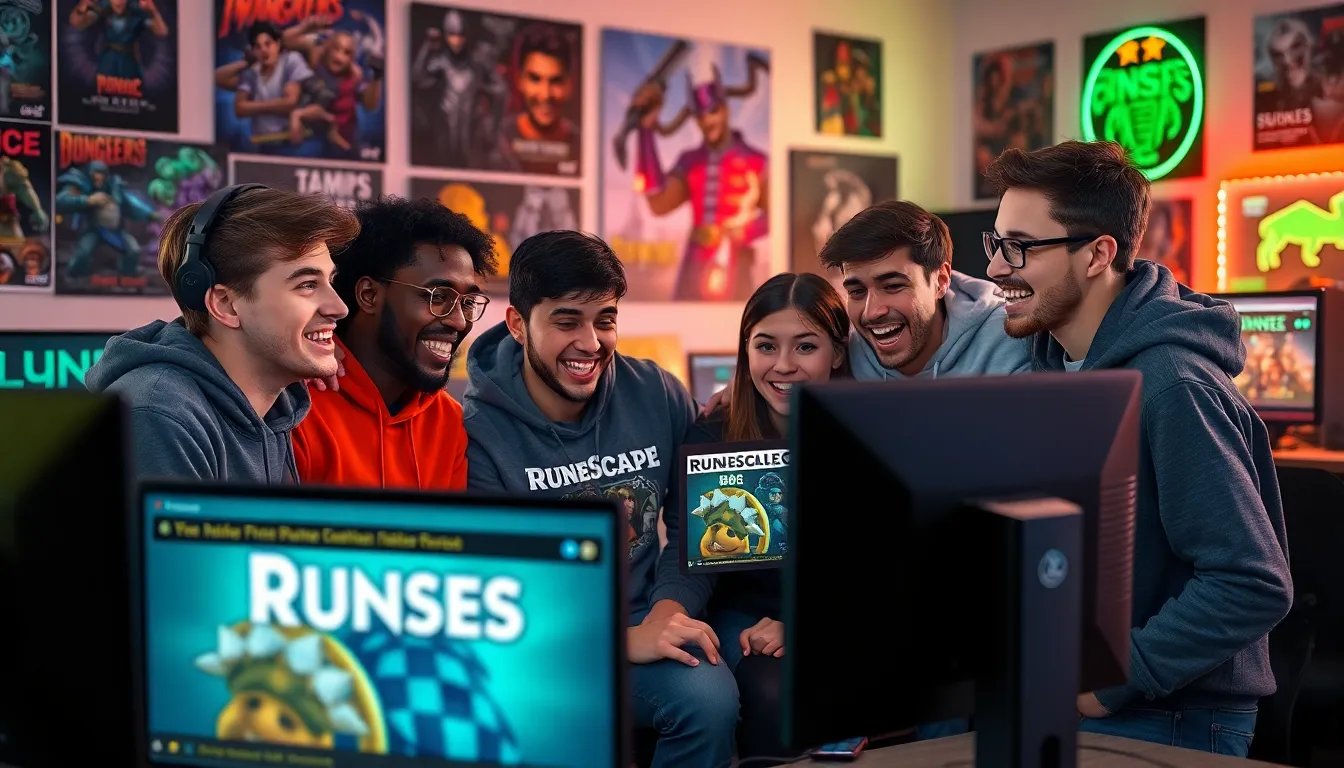Step into a world where knights clash and dragons soar—all from the comfort of your living room. Virtual reality (VR) medieval combat is not just a game; it’s an epic adventure that lets players wield swords, don armor, and unleash their inner warrior. Forget about dull workouts or mundane evenings; this immersive experience transforms the way people engage with history and gaming.
Imagine swinging a sword so realistically that you might just scare your cat. With VR technology, players can feel the weight of their weapons and hear the clash of armor as they battle foes. It’s like being in a blockbuster movie where you’re the star, minus the awkward audition process. So grab your headset and get ready to dive into a thrilling realm where chivalry meets cutting-edge technology. Who knew medieval combat could be this much fun?
Table of Contents
ToggleOverview of VR Medieval Combat
Virtual reality medieval combat immerses players in a historically rich environment where they engage in battle. Players can choose from various weapons such as swords, axes, and shields, each with unique handling and strategy. By donning VR headsets, they experience a 360-degree world filled with castles, forests, and battlegrounds.
Combat mechanics focus on realism, emphasizing accurate movement and physics. The weight of each weapon feels authentic, allowing users to perform swings, thrusts, and parries just as historical warriors would. Sounds of clashing metal and battle cries further enhance the immersive experience, making every encounter feel intense.
Multiplayer modes facilitate cooperative or competitive gameplay, enabling friends to team up or face off in arenas. Players can hone their skills through practice modes or join large-scale battles, fostering teamwork and strategy execution. Clans and guilds form within these platforms, adding a social dimension that mirrors historical warrior communities.
Many VR medieval combat experiences include extensive character customization options. Players can select and modify armor sets and weapon appearances, fostering unique identities in the game. Some titles offer skill progression systems, allowing users to develop their character over time, enhancing combat capabilities.
Engaging storyline campaigns add depth to combat mechanics, offering quests that immerse players in narrative-driven adventures. Historical accuracy within these tales captivates those interested in medieval history while still providing thrilling gameplay.
This combination of realism, community interaction, and immersive storytelling has revolutionized the way players engage with medieval combat. As technology advances, VR medieval combat promises to deliver even more authentic and exhilarating experiences for enthusiasts.
Key Features of VR Medieval Combat

VR medieval combat offers players a thrilling experience with several standout features. Immersive environments and realistic combat mechanics enhance the overall engagement and authenticity of gameplay.
Immersive Environments
Immersive environments transport players to historically rich landscapes that reflect medieval life. Users can explore castles, lush forests, and village settings filled with vibrant details. Each location contributes to the sense of realism, creating an engaging backdrop for battles. Interactive elements also enrich player experience, allowing for interactions with objects like weapons and armor. The dynamic weather systems and day-night cycles add another layer of depth, making every battle unique. This combination of vivid visuals and detailed soundscapes invites players to fully lose themselves in the medieval world.
Realistic Combat Mechanics
Realistic combat mechanics define the essence of VR medieval combat. Players wield a variety of weapons, including swords and axes, each requiring distinct techniques and strategies. Accurate physics simulate weapon weight, movement, and impact, enhancing the feeling of authenticity. Combat scenarios incorporate responsive AI opponents, making encounters engaging and challenging. Players can experience different fighting styles, such as defensive or aggressive tactics, creating varied gameplay experiences. Skill-based systems allow users to improve their abilities over time, promoting a sense of progression and achievement in battles.
Popular VR Medieval Combat Games
Several VR medieval combat games currently captivate players with their immersive experiences and engaging gameplay. Each title offers unique features, making them stand out in the genre.
Game 1: Blade and Sorcery
Blade and Sorcery excels in realistic physics and combat mechanics. Players wield an array of weapons, including swords, axes, and magical spells. The game’s physics engine keeps combat responsive, allowing for varied combat styles. Dynamic environments contribute to realism, enabling players to interact with their surroundings creatively. Skill progression feels rewarding, encouraging players to master each weapon’s unique handling. Engaging multiplayer options allow friends to join or compete in thrilling battles.
Game 2: Kingdom Come: Deliverance VR
Kingdom Come: Deliverance VR transports players to historically accurate medieval settings. Historical detail enhances immersion, from architecture to clothing styles. A narrative-driven campaign guides players through quests, merging action with storytelling. Customization features let players tailor their character’s appearance and skills. Engaging in realistic combat scenarios requires strategy and thoughtfulness. Exploring vast landscapes, including castles and forests, enriches gameplay. Collaborative multiplayer modes also enhance social interactions among players, echoing the camaraderie found in medieval warrior communities.
Benefits of VR Medieval Combat
VR medieval combat offers various benefits, providing an engaging experience that enhances physical and cognitive skills.
Enhanced Physical Engagement
Players experience heightened physical engagement in VR medieval combat. Active participation involves swinging weapons and dodging attacks, promoting exercise through immersive gameplay. Coordination and balance improve as players navigate dynamic battle scenarios. Strength builds while wielding different weapons, from swords to axes. VR technology delivers a realistic sense of presence, making movements feel authentic. Players often feel as if they are truly part of the action, leading to a more enjoyable and beneficial experience. This immersion encourages repeated sessions, enhancing fitness levels while having fun.
Cognitive Skill Development
Cognitive skills develop significantly in VR medieval combat environments. Players strategize during battles, assessing opponents and devising effective tactics. Problem-solving enhances when navigating complex scenarios or dealing with unpredictable AI enemies. Quick decision-making becomes crucial, as players must react promptly to changing battle conditions. Additionally, remembering various weapon handling and fight mechanics sharpens memory retention. Engaging storylines motivate players to analyze narratives and make choices that affect outcomes. Overall, this blend of strategy, reaction, and critical thinking creates a robust cognitive workout.
VR medieval combat offers an unparalleled blend of excitement and realism that captivates players. It immerses them in a world where they can wield weapons and engage in epic battles, all while honing their physical and cognitive skills. The combination of detailed environments and intricate combat mechanics elevates the gaming experience beyond mere entertainment.
As technology continues to evolve, the potential for even more immersive and engaging experiences in this genre is promising. With popular titles setting the standard, players can look forward to rich storylines and dynamic gameplay that not only entertains but also fosters community and camaraderie. VR medieval combat is truly redefining how players connect with history and each other.








